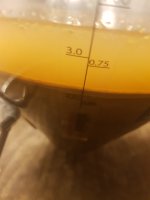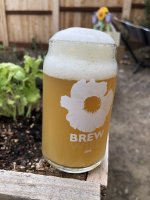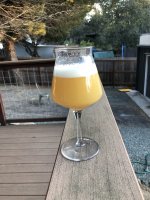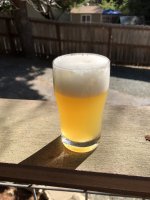aaronm13
Well-Known Member
Thanks. Was looking at a video on youtube from my LHS and they recommended this too. Some brewery's reported grassy flavors adding after fermentation was finished. Would mixing with cooled, boiled water be ok?add it end of fermentation to get good mixing
The Verdant yeast is ripping through this beer. It's down to around 1.030ish from 1.079 after only 48 hours post pitch. This is based off a Tilt so could be way off. If it's correct I might have to add the Spectrum tomorrow or Thursday. I just opened the Fermenter to top crop some yeast and there's exactly a gallon of krausen. It's up to the brim on my SS Brewtec bucket. Glad I have the domed lid to give me a bit more head space.





























![Craft A Brew - Safale BE-256 Yeast - Fermentis - Belgian Ale Dry Yeast - For Belgian & Strong Ales - Ingredients for Home Brewing - Beer Making Supplies - [3 Pack]](https://m.media-amazon.com/images/I/51bcKEwQmWL._SL500_.jpg)



































